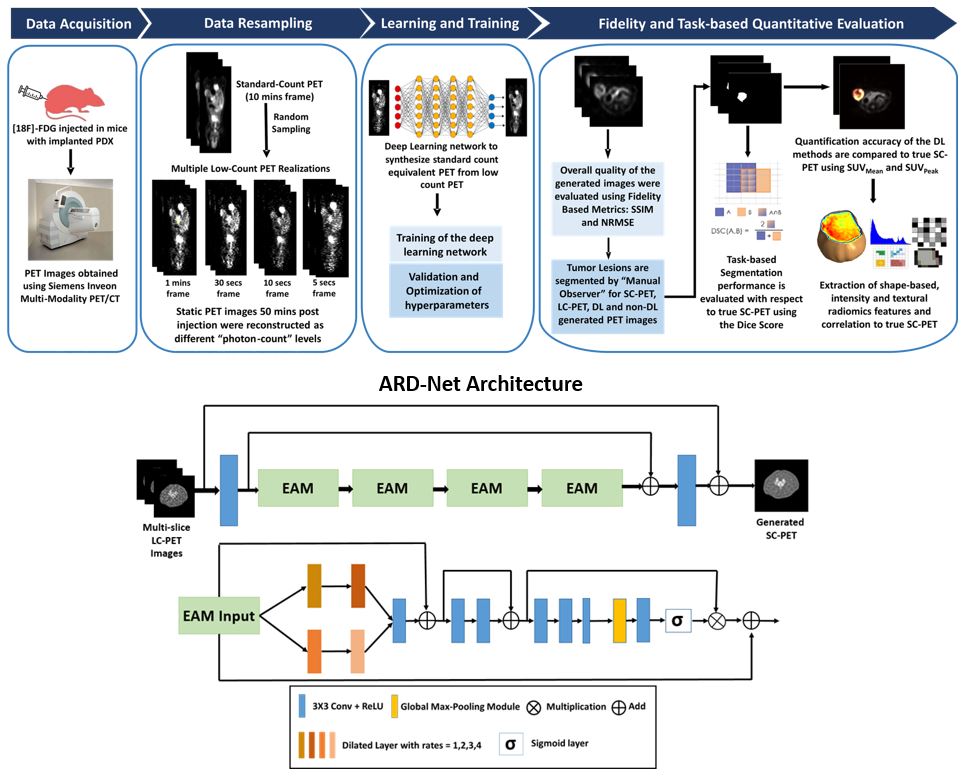Deep-Learning framework for identifying cross-scale correlation in multiscale preclinical imaging
Developing a deep-learning based computational pipeline to integrate multiscale preclinical imaging consisting of in-vivo PET imaging, autoradiography and histopathology for analyzing biological interpretability and to improve therapeutic predictions. The framework consists of three different aspects (1) To develop automatic registration for multiscale imaging i.e., autoradiography (ex-vivo PET) with corresponding H&E and IHC data. (2) Developing a deep-learning based correlative analysis pipeline (CorrNet) for studying the correlation of autoradiography features (ex-vivo PET) to that histopathological features (H&E/IHC). (3) Correlate and integrate in-vivo data (PET) and histopathological data (H&E/IHC) in feature space by combining cytometric and radiomics features to predict therapeutic response 


